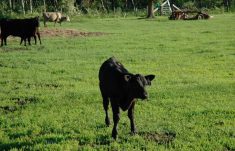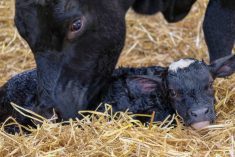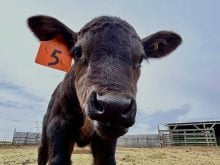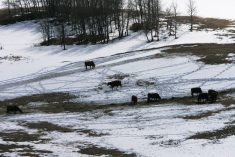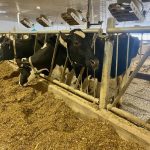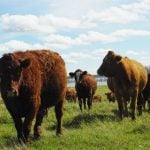When young nursing calves become sick on pasture, the term “summer pneumonia” is often used to describe their situation.
Technically, it’s a misnomer, says Russ Daly, extension veterinarian at South Dakota State University. Calf producers typically refer to it this way, as it happens on pasture matching up with summer in North America, as opposed to ‘fall pneumonias,’ often referring to feedlot cattle post-weaning.
“What we find is all pneumonias are similar in their pathogenesis, or how they develop in the animal, whether it’s a young calf or a feedlot steer after they’ve been transported,” says Daly. “It’s still the same germs, bacteria, viruses and risk factors. No single bug is associated with summer pneumonia.”
Read Also
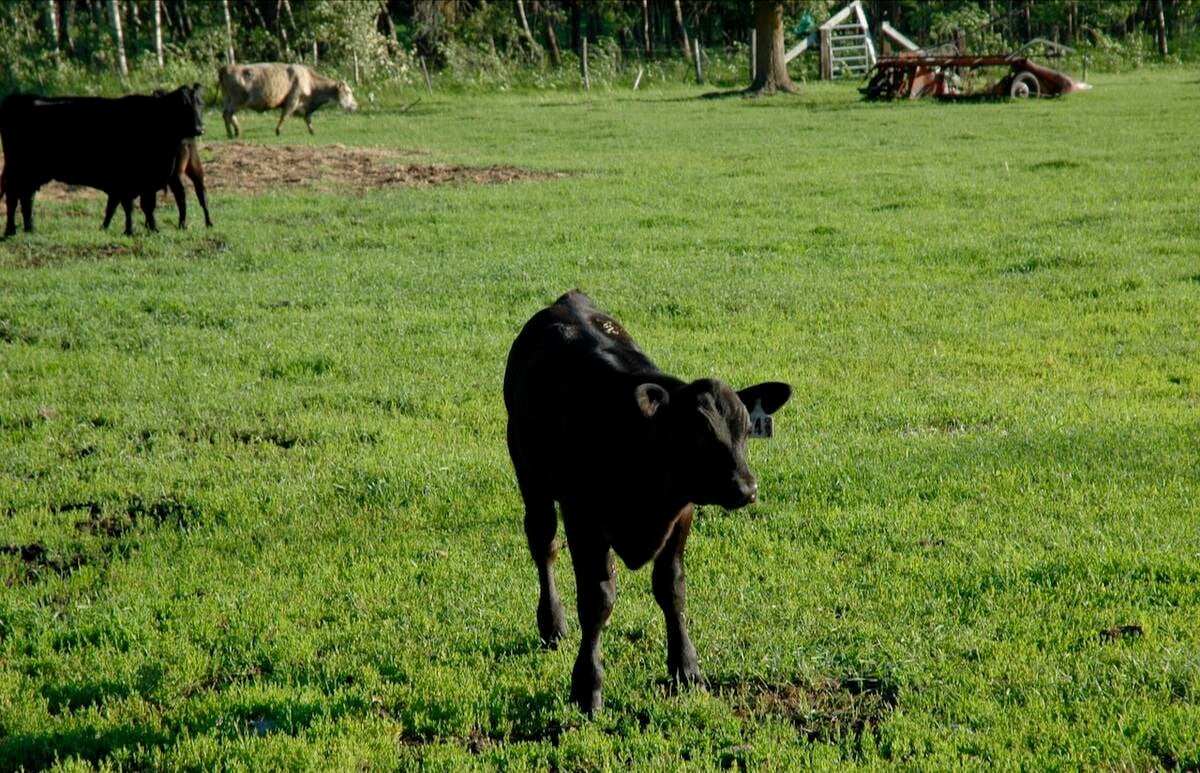
Beef calf creep feeding pays good profits in 2025
Better rainfall has meant more feed on much of the Prairies, but creep feeding beef calves still pays well in 2025.
Sickness generally fits under the heading of Bovine Respiratory Disease (BRD). In the broadest sense, BRD refers to any disease of the upper or lower respiratory tracts. BRD in cattle is commonly associated with infections of the lungs, causing pneumonia in calves that have recently been weaned or recently arrived at the feedlot. BRD is most prevalent within the first weeks of arrival at the feedlot. It can occur later in the feeding period and is also seen in calves on pasture.
Pathogens, viral agents and causes
Post-mortems of affected calves show the familiar types of bacteria older cattle experience, such as Mannheimia, Histophilus and Mycoplasma. Causes include exposure to dust, a condition dependent on weather. “In dry pastures, risk factors like dust push the bacteria down into the lungs for both older and younger calves,” says Daly, noting the dynamics of calf pneumonia can be broken down into two distinct phases.
First, he attributes insufficient colostrum as the potential cause for newborns in the first two months of life.
“The biggest risk factor is the transfer of immunity from mother to calf through colostrum,” he says. “If the quality isn’t there, antibody levels won’t be present to help fight off germs present in younger life.”
Second, older calves becoming ill in late summer or early fall before weaning also relates to colostrum, although a bit more indirectly. In this case, with the passage of time the colostral protection is wearing off, causing calves to become vulnerable to disease.
“If it’s happening in a lot of calves at the same time, we can get a drop of overall immunity in the population, making them all susceptible at once,” he says. “Sometimes, we can help tease out those risk factors by looking at the age as they’re getting sick.”
Vaccinations, management, and distribution
Daly says the best defence is targeted and timely vaccinations, as they can stimulate immunity. He says it’s challenging to elicit a strong immune response in very young animals, but vaccinating before turnout will provide a realistic opportunity.
“There’s more to it, but it’s one of the tools we can control,” he says. “Look at when they are expected to get ill and ask — what can we do two or three weeks before to get vaccines into them?”
Management is another control tool. Processes such as estrus synchronization and artificial insemination where cow-calf pairs are gathered, sorted and grouped, often in dusty conditions, generate extra stress and foster transmission of bacteria.
“The younger the calves are when they experience this close contact, the sooner they’ll become colonized with bacteria that could eventually find its way to the lungs,” Daly says.
While all cattle populations carry pneumonia-causing germs, older animals aren’t as affected, as their immune systems hold it in check, but if the bacteria colonize in young calves before they are able to defend against it, issues arise.
“Being contagious is in play, because calves in closer proximity will ensure their herd mates become colonized too,” he says. “From there it’s up to the calf’s immune system to keep the disease in the nasal passages and not let it get down to the lungs.”
Calf crops in a wider range of age and size also invite greater risks since broader stages of immunity are present. Older ones might be more immune but may become a source of bacteria for younger ones. Creating a compact calving season is an opportunity to defend animals against sickness, although it’s a double-edged sword, says Daly.
“If we have a very tight age distribution, it might mean everyone loses their immunity from maternal antibodies at once,” he says. “Or the exposure becomes uniform resulting in more dramatic problems.”
Attention and treatment
Vaccination, management and calving distribution aren’t a universal answer or silver bullet, as well-cared-for and ignored herds alike can break with pneumonia. As prey animals, bovines work hard to hide their symptoms, but subtle changes in behaviour should be noted, along with obvious visual cues such as drooping ears, lethargy and laboured breathing.
“A wide variety of antibiotic choices are available and approved for BRD,” Daly says. “Producers should remain watchful and vigilant of their nursing calves. It’s tougher to pull and treat them on pasture, but they do respond well to antibiotics.”



